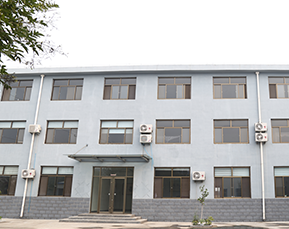 Afrikaans
Afrikaans  Albanian
Albanian  Amharic
Amharic  Arabic
Arabic  Armenian
Armenian  Azerbaijani
Azerbaijani  Basque
Basque  Belarusian
Belarusian  Bengali
Bengali  Bosnian
Bosnian  Bulgarian
Bulgarian  Catalan
Catalan  Cebuano
Cebuano  Corsican
Corsican  Croatian
Croatian  Czech
Czech  Danish
Danish  Dutch
Dutch  English
English  Esperanto
Esperanto  Estonian
Estonian  Finnish
Finnish  French
French  Frisian
Frisian  Galician
Galician  Georgian
Georgian  German
German  Greek
Greek  Gujarati
Gujarati  Haitian Creole
Haitian Creole  hausa
hausa  hawaiian
hawaiian  Hebrew
Hebrew  Hindi
Hindi  Miao
Miao  Hungarian
Hungarian  Icelandic
Icelandic  igbo
igbo  Indonesian
Indonesian  irish
irish  Italian
Italian  Japanese
Japanese  Javanese
Javanese  Kannada
Kannada  kazakh
kazakh  Khmer
Khmer  Rwandese
Rwandese  Korean
Korean  Kurdish
Kurdish  Kyrgyz
Kyrgyz  Lao
Lao  Latin
Latin  Latvian
Latvian  Lithuanian
Lithuanian  Luxembourgish
Luxembourgish  Macedonian
Macedonian  Malgashi
Malgashi  Malay
Malay  Malayalam
Malayalam  Maltese
Maltese  Maori
Maori  Marathi
Marathi  Mongolian
Mongolian  Myanmar
Myanmar  Nepali
Nepali  Norwegian
Norwegian  Norwegian
Norwegian  Occitan
Occitan  Pashto
Pashto  Persian
Persian  Polish
Polish  Portuguese
Portuguese  Punjabi
Punjabi  Romanian
Romanian  Russian
Russian  Samoan
Samoan  Scottish Gaelic
Scottish Gaelic  Serbian
Serbian  Sesotho
Sesotho  Shona
Shona  Sindhi
Sindhi  Sinhala
Sinhala  Slovak
Slovak  Slovenian
Slovenian  Somali
Somali  Spanish
Spanish  Sundanese
Sundanese  Swahili
Swahili  Swedish
Swedish  Tagalog
Tagalog  Tajik
Tajik  Tamil
Tamil  Tatar
Tatar  Telugu
Telugu  Thai
Thai  Turkish
Turkish  Turkmen
Turkmen  Ukrainian
Ukrainian  Urdu
Urdu  Uighur
Uighur  Uzbek
Uzbek  Vietnamese
Vietnamese  Welsh
Welsh  Bantu
Bantu  Yiddish
Yiddish  Yoruba
Yoruba  Zulu
Zulu conveyor pulley parts
Understanding Conveyor Pulley Parts The Backbone of Material Handling Systems
Conveyor systems are essential in various industries, facilitating the efficient movement of materials from one point to another. At the heart of these systems lies a crucial component the conveyor pulley. Understanding the different parts of a conveyor pulley is essential for anyone involved in the design, maintenance, or operation of conveyor systems.
1. What is a Conveyor Pulley?
A conveyor pulley is a cylindrical machine component used to support and guide the conveyor belt. It plays a pivotal role in the overall functionality of the conveyor system. Typically made from high-quality steel or aluminum, conveyor pulleys are designed to withstand significant loads, abrasion, and environmental conditions.
2. Main Parts of a Conveyor Pulley
The main components of a conveyor pulley generally include
- Drum This is the main body of the pulley, around which the conveyor belt wraps. The drum is designed to effectively transmit torque from the conveyor motor to the belt.
- Shaft The shaft is a critical part that connects the drum to the conveyor frame. It aids in rotation and is usually made from strong materials to resist bending and deformation under load.
- Bearings Positioned on the ends of the shaft, bearings allow for smooth rotation of the drum. They reduce friction between the shaft and drum, ensuring efficient operation. Proper selection and maintenance of bearings are vital for the longevity of the pulley.
- Shell The shell is the outer surface of the drum and can be smooth or equipped with rubber coatings, depending on the application. The surface texture plays a significant role in gripping the conveyor belt and preventing slippage.
- End Caps These are sturdy components that close off the ends of the drum, protecting the internal parts from dirt and debris while maintaining the integrity of the pulley system.
conveyor pulley parts

- Spacers and Flanges These parts help to position the drum correctly and maintain alignment within the conveyor system. Proper spacing is crucial for minimizing wear and tear on the conveyor belt.
Conveyor pulleys come in various types, each serving specific functions
- Drive Pulleys Also known as head pulleys, these are located at the discharge end of the conveyor system. They transmit power from the motor to the conveyor belt.
- Return Pulleys Found at the tail end, return pulleys help the belt return to the starting point. They are usually unpowered and serve to redirect the belt.
- Tail Pulleys Located at the end of the conveyor system, tail pulleys assist in maintaining belt tension and alignment.
- Snub Pulleys These pulleys provide additional support and tension to the belt, increasing the contact area between the belt and drive pulleys for improved traction.
4. Maintenance of Conveyor Pulleys
Maintenance is critical to ensuring the longevity and efficiency of conveyor pulleys. Regular inspections should be done to check for wear on the bearings, misalignment, and any signs of damage to the shell or drum. Greasing the bearings regularly and tightening any loose screws will help maintain smooth operation. Additionally, addressing any abnormalities in operation promptly can prevent larger issues from arising.
5. Conclusion
In summary, conveyor pulleys and their parts are vital components of any effective material handling system. Understanding their design and functionality allows operators and maintenance personnel to ensure maximum efficiency and reliability. By maintaining these components properly, companies can enhance the performance of their conveyor systems, ultimately leading to increased productivity and reduced downtime. Whether in manufacturing, mining, or logistics, the importance of conveyor pulleys cannot be overstated, as they truly are the backbone of material handling systems.
-
Revolutionizing Conveyor Reliability with Advanced Rubber Lagging PulleysNewsJul.22,2025
-
Powering Precision and Durability with Expert Manufacturers of Conveyor ComponentsNewsJul.22,2025
-
Optimizing Conveyor Systems with Advanced Conveyor AccessoriesNewsJul.22,2025
-
Maximize Conveyor Efficiency with Quality Conveyor Idler PulleysNewsJul.22,2025
-
Future-Proof Your Conveyor System with High-Performance Polyurethane RollerNewsJul.22,2025
-
Driving Efficiency Forward with Quality Idlers and RollersNewsJul.22,2025





























